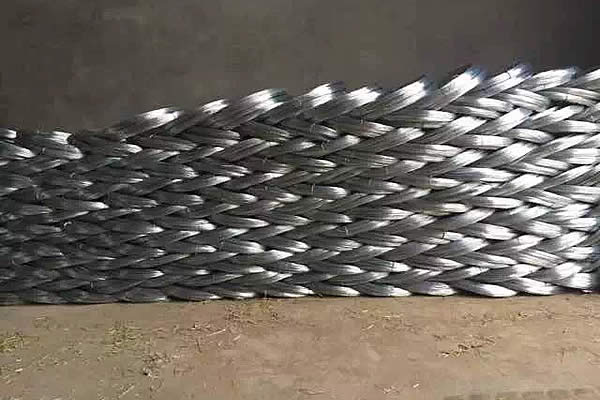 TEL:
+86-13102802206
TEL:
+86-13102802206
 Email:
fencenetting@china.com
Email:
fencenetting@china.com
 Language
Language
 TEL:
+86-13102802206
TEL:
+86-13102802206
 Email:
fencenetting@china.com
Email:
fencenetting@china.com
 Language
Language


The Significance of Steel Tie Wires in Construction and Manufacturing
Steel tie wires are essential elements in the construction and manufacturing sectors, serving multiple functions that enhance structural integrity and efficiency. These versatile wires are predominantly used in building reinforcement, tying rebar, securing frameworks, and various applications across different industries. Their strength, durability, and adaptability make them a preferred choice for engineers and construction professionals.
The Composition and Characteristics of Steel Tie Wires
Steel tie wires are typically made from high-carbon steel, which imparts exceptional tensile strength and resilience. The manufacturing process often involves drawing the steel to specific diameters, providing the desired flexibility while maintaining its rigidity. Depending on the intended use, tie wires can be coated with materials such as zinc to improve corrosion resistance, which is crucial in environments exposed to moisture or harsh conditions.
The standard roll of steel tie wire usually varies in diameter, with 16 to 18 gauge being the most common sizes. This variation allows versatility in application, as thinner wires provide flexibility for delicate tasks, while thicker wires cater to heavy-duty needs. The malleability of steel tie wires enables easy handling, manipulation, and bonding, making them indispensable in various methodologies.
Applications in Construction
In construction, steel tie wires play a pivotal role in rebar reinforcement. They are utilized to tie together steel reinforcement bars (rebar) in concrete structures, ensuring that the rebar remains securely positioned during the pouring and curing process. This practice is critical as it enhances the overall tensile strength of concrete, allowing structures to withstand various environmental stresses.

Moreover, tie wires are fundamental in securing scaffolding and other temporary structures. They provide stability and support, reducing the risk of collapse, which is paramount for worker safety on construction sites. By utilizing tie wires, builders can create a secure framework that allows for safe access and operation during the construction phase.
Beyond structural reinforcement, steel tie wires are also used in utilities installation, such as electrical and plumbing systems
. They help in bundling electrical cables or securing pipes, preventing tangles and ensuring a neat, organized installation. This not only improves the aesthetic appeal but also facilitates maintenance and troubleshooting.Benefits in Manufacturing
The manufacturing sector also significantly benefits from steel tie wires. In industries where products require bundling or stabilization, such as agricultural products or construction materials like lumber or bricks, steel tie wires provide an efficient and sturdy solution. They can withstand substantial weight and prevent shifting during transport, ensuring that products remain intact and secure.
Additionally, steel tie wires find applications in the production of various goods, such as furniture, appliances, and automotive parts, where they help in assembling components together. Their versatility in manufacturing processes underlines their importance in maintaining quality and durability in end products.
Conclusion
In conclusion, steel tie wires are integral components in both construction and manufacturing, playing crucial roles in enhancing structural integrity and operational efficiency. The combination of strength, flexibility, and adaptability makes them indispensable in a myriad of applications. As the construction and manufacturing industries continue to evolve, the demand for reliable components like steel tie wires will undoubtedly remain, highlighting their enduring significance in modern engineering practices. Investing in quality steel tie wires not only ensures safety and stability but also contributes to the longevity and reliability of the constructions and products that they help to support.